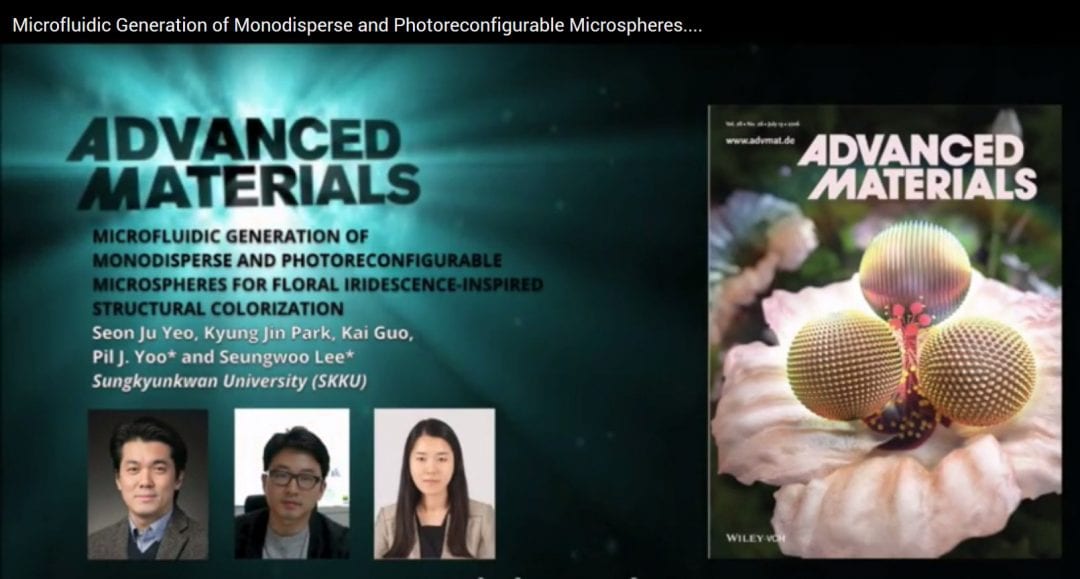Flowering plants lure us with their intense color and smells. But have you ever wondered what coloration strategies these plants use? In order o attract pollinators and to communicate the state of the flower, floral iridescence not only relies on pigments and dyes but also on structural coloration.
In this particular case, the color may be produced by microscopically structured surfaces, fine enough to interfere with visible light. Scientists have been actively researching ways to mimic this strategy, be evoking patterns on various substrates in the nanoscale.
In a recent issue of Advanced Materials a study explores the possibility to control these phenomena with the preparation of monodisperse photoreconfigurable microspheres which have been generated microfluidically. The work was done by researchers from Sungkyunkwan University in South Korea, led by Prof. Lee and Prof. Yoo.
Prof. Yoo: “Microfluidics is a powerful technique for synthesizing microparticles with high uniformity. In this study with precise control over microfluidic conditions we could successfully synthesize photoresponsive azopolymer spherical microparticles which were further processed for embedding surface grating patterns to mimick floral iridescence.”
The photoresponsiveness of the uniformly smoot spheres stems from the azopolymer`s capability to undergo structural transition upon irradiation. The effect of solvent evaporation was studied and the particles were shown to produce raspberry of acorn-like azoparticles depending which solvent was used.
Prof. Lee: “In this work we successfully reproduced flower’s strategy by texturing 2D gratings onto snythesized monodisperse azopolymeric microsphere.”
Holographic photofluidization is used to achieve deterministic texturing with diverse surface relief gratings. Diverse lattices of surface relief gratings on curved surfaces could be obtained. And lastly, the particles could be completely reconfigured by using different irradiation patterns, thus offering a new and rich diversity of floral-iridescence-inspired colorization. To know more, please go to Advanced Materials.
This is a transcript of an Advanced Materials Video Abstract – watch the video here!

















